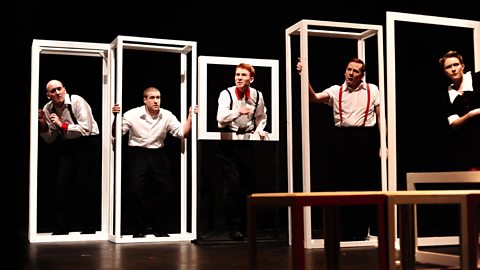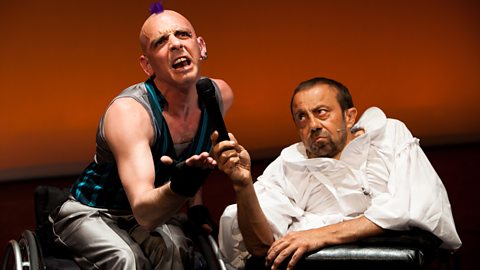Using Physical theatre in your production
Stylised movement
Imagine a production of ShakespeareŌĆÖs play, Macbeth. Usually we hear about the battle at the start of the play. How would it affect the production if instead we saw the fighting in a stylised fashion with the witches clearly controlling the action as though they were puppeteers? Kenneth BranaghŌĆÖs 2013 production of Macbeth was hailed for its physicality, particularly during the battle scene at the beginning of the play.
Physical theatre can also be used in the way director, Steven Berkoff used it in The Trial, to provide the scene, whether this is furniture for a room or a busy street. The use of people to create everything allows great opportunities for dynamic impact. In The Trial, it was the cast, very simple frames and a rope on an empty performance area that created the whole staging.

Combining art forms
Physical theatre has a focus on movement but can be separate from the spoken word or united with it to expand and explore its meaning. It may well be devisedA piece of original work created through rehearsal. Often explored as ensemble rather than director led. or contain substantial elements of work beyond the printed script. These elements could be other art forms such as music, dance, the use of media or visual images. So you could use a combination of elements that may also be combined with script, for instance. You could reach out to the audience in a way that challenges the so-called fourth wallAn imaginary fourth wall between the audience and the actors to help establish the illusion of reality., making the audience a collaborator in the action. (ItŌĆÖs not unusual for Physical theatre to actually encourage or demand audience participation.)
